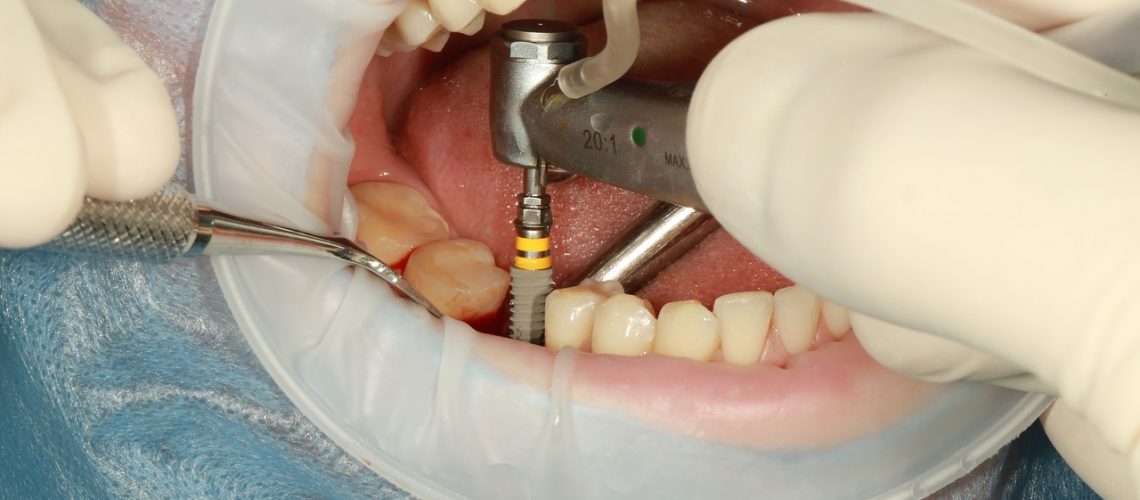The 8-Minute Rule for Dental Sense
The 8-Minute Rule for Dental Sense
Blog Article
Getting The Dental Sense To Work
Table of ContentsThe Best Strategy To Use For Dental SenseGetting The Dental Sense To WorkFascination About Dental SenseNot known Incorrect Statements About Dental Sense
are clinical tools surgically implanted into the jaw to bring back an individual's capability to chew or their look. They supply assistance for man-made (phony) teeth, such as crowns, bridges, or dentures. When a tooth is shed because of injury or condition, an individual can experience problems such as rapid bone loss, faulty speech, or changes to chewing patterns that cause pain.Dental dental implant systems consist of an oral implant body and dental implant abutment and may also include a joint addiction screw. Kids dental. The dental implant body is surgically placed in the jawbone instead of the tooth's root. The oral implant joint is generally affixed to the dental implant body by the abutment fixation screw and prolongs with gums right into the mouth to sustain the connected fabricated teeth
(https://www.storeboard.com/dentalsense)Framework of The Dental Implant System choosing dental implants, talk to your dental service provider about the possible advantages and risks, and whether you are a candidate for the procedure. Things to think about: Your overall health and wellness is a vital consider identifying whether you are a good candidate for dental implants, the length of time it will certainly take to recover, and how much time the dental implant may remain in area.
Smoking might affect the healing process and decrease the long-term success of the implant. The healing process for the implant body may take several months or longer, during which time you commonly have a short-lived joint in place of the tooth. the dental implant procedure: Very carefully comply with the oral health directions provided to you by your dental provider.
Some Known Incorrect Statements About Dental Sense
Implant failure can result in the demand for an additional procedure to fix or replace the implant system. Brings back the ability to eat Brings back aesthetic look Helps keep the jawbone from reducing due to bone loss Maintains the health and wellness of the bordering bone and gums Aids keep adjacent (neighboring) teeth secure Improves top quality of life Damage to bordering natural teeth throughout implant positioning Injury to the surrounding cells during surgery, such as sinus perforation Injury throughout surgical procedure (for example, crack of bordering jawbone) Insufficient feature, such as seeming like the teeth do not bite with each other normally An experience that the tooth is loosened or turning in area arising from a joint screw loosening up Implant body failing (looseness of the implant body) as a result of systemic infection, which might be more most likely in individuals with uncontrolled diabetics issues due to regional infection in bone and gum tissues sustaining the implant body due to delayed recovery, which may be more probable in patients who smoke Problem cleaning up the gum tissues around the dental implant, resulting in bad oral health Unattended gum illness Post-surgical pins and needles because of nerve impingement or damages Always inform healthcare companies and imaging specialists that you have dental implants prior to any type of magnetic resonance imaging (MRI) or x-ray procedures.
FDA is not familiar with any kind of damaging occasions reported for MRI or x-ray treatments with oral implants. Dental implants systems are normally made of materials that comply with international agreement requirements of the International Organization for Standardization (ISO) or ASTM International. These criteria have details of what makes a safe product.

A dental implant is a structure that replaces a missing tooth. With screw-like tools, the specialist inserts an implant right into the jawbone, and it acts as an anchor for a fabricated tooth, called a crown.
The 4-Minute Rule for Dental Sense
Some individuals are not eligible for oral implant surgical procedure. It is for dental doctors to operate people with: acute illnessuncontrollable metabolic diseasebone or soft cells condition or infectionIf these issues are settled, an individual can have the surgical procedure. In, dental cosmetic surgeons avoid from operating people with: If individuals with any of the above undergo dental implant surgical procedure, there is a higher threat of the dental implant stopping working.

Dental implant surgical procedure is a tailored procedure. It's not the very same for every person. However the adhering to offers a general summary of what you can expect your dental expert, oral surgeon, periodontist or prosthodontist to do: Place the implant operatively. Give you time to recover. Attach the post and last crown, bridge or denture.
Next off, your surgeon will carefully place the dental implant into your jaw. If your implant is near the front of your mouth, your dentist will make a momentary tooth for you to put on up until you recover.
Dental Sense for Dummies
Throughout the recovery phase, your jawbone ought to fuse to the oral implant. This process can take anywhere from 3 to nine months.
Once your dental implant heals, your dental expert can attach the abutment (little port blog post) and your final reconstruction (crown, bridge or denture). This usually takes regarding one hour to complete and might require a second small surgical treatment. You shouldn't my website really feel any kind of pain during your dental implant treatment because your supplier will use medication to numb your gums.
Report this page